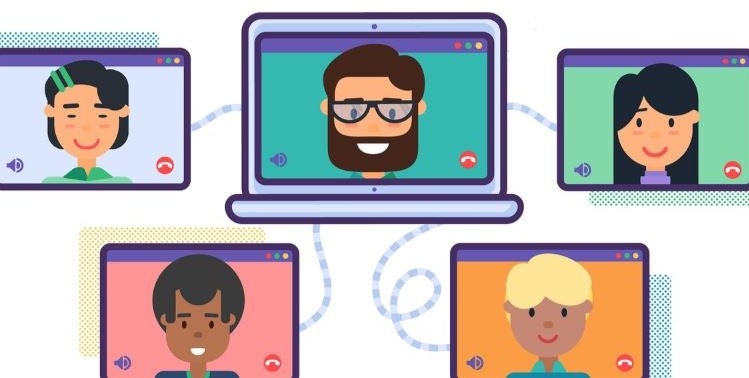Virtual learning presents plenty of challenges, so we gotta take the wins as they come!
In my current role as a middle school Literacy Coach, one thing I believe our English team can chalk up as a W is the progress we’ve made with small-group instruction. Don’t get me wrong, though. It hasn’t been easy. It’s required a LOT of experimentation.
We try. We learn. We adapt. We repeat.
However, some of the most enriching learning experiences that have occurred during this upside-down school year have taken place in these more personalized settings. In fact, after one small-group structure we tried early on, one teacher said she cried happy tears afterward because she felt like she truly reached her students, and the data confirmed it. That’s when it became abundantly clear to me that we needed to do more of it!
In my opinion, small-group instruction in a normal, face-to-face setting is best practice when working with learners of all ages. I’d argue that it matters even more when teaching online amid a pandemic. It’s far too easy for students to disconnect and disengage, and we have to very intentionally create opportunities to identify and meet their individualized needs.
So, here are 20 small-group structures to consider utilizing in your virtual classrooms:
- Divide and Conquer: We are each other’s greatest resources! Invite a colleague such as a special education teacher, specialist, or TA to co-teach with you. Split the class in half, and send students to two separate breakout rooms. You could differentiate the plan, or simply follow the same instructional sequence while students benefit from a decreased teacher-student ratio. Be sure to reconvene afterward to reflect on shared insights!
- Peer Partnerships: Place students in pairs to work on a collaborative task that you can monitor in real time using tools such as Flipgrid or Padlet. Pop around to provide support. Let’s be honest, though. Who has entered a collaborative breakout room only to discover straight-up crickets? When possible, pre-assign the partnerships based upon their preferences to increase their comfortability. It’s also helpful to structure the activity so it’s symbiotic, meaning they should literally need each other to complete it. An example of this might be students interviewing/writing a biography about each other.
- Let Them Fly (Solo): It can be challenging to focus while working on a task in a synchronous setting. Even when in small groups, there are no side conversations. Students are subject to all dialogue even if it doesn’t apply to them. Some assignments are better suited for solo spaces. Send every student to their own individual breakout room to work. Instruct them to use the Ask for Help button if any questions arise. This structure will help with concentration while allowing you to provide one-on-one support as needed.
- On-the-Spot Flex Grouping: Sometimes it’s hard to predict what students will need until we’re in the moment. For instance, last week a few students were feeling overwhelmed reading a lengthy text and asked if they could read together. So, we put them in a breakout room, and they got the job done. It’s OK to veer off the script! Here are 75 digital tools and apps for formative assessment. You can also grab quick snapshots via the raise hand feature, finger scales, number codes in the chat box, emoji temperature checks, etc.
- Target-Focused Group Instruction + Independent Practice: Use informal/formal data to determine skills that need to be further addressed. Place students in breakout rooms with peers who can benefit from receiving additional support with like skills. Within this structure, you can float around to each group to provide skill-based instruction. When the students aren’t with you, have them navigate a series of resources/activities independently. For example, students could complete a Must Do/May Do list or select items of interest from a Choice Board.
- Processes and Products: How would students like to learn the material? How would they like to showcase this learning? Give them choice to promote student agency! Then, place students in breakout rooms with peers by process/product so they can support one another. This makes it easier for you to provide feedback, too.
- Share Sessions & Passion Projects: Let’s get students sharing/learning about what matters to them! Try doing a Word Splash (students jot down topics of interest they’d like to share about) using Popplet. Then, clump these ideas into categories, and send students into breakout rooms to discuss for community building! Or, try doing a Wonder Wall (students jot down “I wonder” statements or questions about a topic they’d like to learn more about) using Google Jamboard. This can serve as a springboard for passion projects. Again, you can sort their wonderings thematically to formulate interest-based learning groups. It’s been a weird year. If we can bring some joy, wonder, and curiosity back to their lives while integrating the curriculum, let’s do it!
- Virtual Flex Seating: Flexible seating empowers students to make decisions about how they learn best. Sadly, flex seating options everywhere are collecting dust! However, we can still give students the opportunity to choose “where” to work, so to speak. For example, your groups could mimic the work environment at Google headquarters. Students can choose if they’d like to go to the CEO’s office (to receive additional support from the teacher), the Coffee Shop (if they want to collaborate with peers), or the Garden (if they want a quiet space to work independently).
- Fast and Focused Feedback: Place students in partnerships or small groups to provide one another feedback. Provide them with a simple yet specific format to follow such as Glows and Grows, Stars and Stairs, Notice and Wonder, TAG (Tell Something You Like, Ask a Question, Give a Suggestion), Two Stars and a Wish, and PQS (Praise, Question, Suggestion).
- Cooperative Roles & Responsibilities: Create a collaborative task, and assign a specific job to each group participant such as chat facilitator who guides the dialogue, word processor who enters the responses onto the deliverable piece, time keeper who monitors the group’s pace, or speaker who shares resonating thoughts to the whole group afterward. This grounds the group in purpose and promotes peer-to-peer accountability.
- Social Networking: Use breakout rooms to promote social-emotional learning! Conduct Responsive Classroom morning meetings for elementary or advisory meetings for secondary to cultivate community while reinforcing SEL skills. The sharing/collaborative aspects of these meetings can occur in breakout rooms. Also, check out my previous post Virtual Learning: 25 Social-Emotional Learning Activities which center around CASEL’s Five Core Competencies. We must place a premium on social emotional learning this school year (and always for that matter).
- Tag Team Teaching: Want to shake things up a bit? Trade students with your team teachers so students can learn about something in a fresh way. For example, if within the revising/editing stages of the writing process, each English teacher on the grade level could plan a synchronous session centered around a writing skill that either the student or teacher determines as an area for growth. Be sure to recruit special education teachers, specialists, or TAs to drive down session sizes.
- Cross-Curricular Collaboration: Miss seeing your colleagues who teach different subjects? Plan an interdisciplinary activity with them! For example, after a noteworthy, real-world event such as the storming of the Capitol, teachers can plan/host a simultaneous follow-up session to help students process what happened through the lens of their discipline. Students can preview each teacher’s plan and decide which session(s) they’d like to attend accordingly. Content previewing is pertinent when addressing sensitive material.
- Virtual Lunch Bunch: Schedule virtual lunch bunches “just because” or as a special incentive. It’s a great way to build relationships with and among students, and students are craving connection now more than ever. Let the selected student(s) bring a friend from class. Let the conversation flow naturally, but have some fun, discussion card prompts on hand just in case. If it’s a nice day, encourage the students to eat outside to get some fresh air before heading onto their next class!
- Mental Health Check-Ins: Host one-on-one or small-group sessions simply to check in with students about their well-being. Prompt discussions about the ups and downs of Covid life. Be sure to share yours. Students can share their roses/thorns, peaks/pits, highs/lows, etc. Help them name their feelings and expect varied levels of vulnerability. Students will gradually open up over time.
- Gamify in Groups: Let students form teams to play academic games such as Gimkit, Kahoot, or Quizizz so that they can interact while playing.
- Virtual Scavenger Hunt: Have students go on a digital scavenger hunt in groups for items tied to the curriculum. Goose Chase is an awesome scavenger hunt app that allows students to snap pictures/take videos to document the missions they complete. Scavenger hunts get students up and moving, too!
- Debate Stations: Present a hot topic, and have students join breakout rooms based upon whether or not they strongly agree, agree, disagree, or strongly disagree with the statement to brainstorm ideas to support their position. They could also examine the topic through an ethos (ethics), pathos (passion), or logos (logic) perspective. For younger students, a simple for or against or this or that should do the trick. Then, reconvene with the whole group and give each group a “minute to win it.” Afterward, have them reconsider their stance in light of the information they glean from their classmates.
- Virtual Field Trip: Give students the chance to choose from a few different virtual field trips to attend. Have them “travel” together in groups. Here are 20 Virtual Field Trips for Your Classroom from Ditch That Textbook!
- 1-on-1 Mini-Conferencing: How can you carve out time from the instructional day (and NOT your personal life) to facilitate 5-minute, one-on-one conferences to provide feedback on special projects? You can work it into your peer/group structures or perhaps create a schedule of back-to-back conferences while the others work through asynchronous activities. Can’t seem to make it work live? Create audio/video feedback instead!
Small-group instruction won’t solve all the issues we’re facing in education, but leaning into it just may turn your Man, I got nothing from this student into Hey, I got something! Or, maybe it’ll turn a something into a something better. Maybe it’ll help your students feel more connected to you, each other, and the learning community as a whole.
Please reach out to me on social media if you have any questions. I’m always happy to talk shop!
Also, sending a BIG shout-out to the AMAZING teachers I get the honor of learning from and working alongside (well…sort of) each day! 🙂









